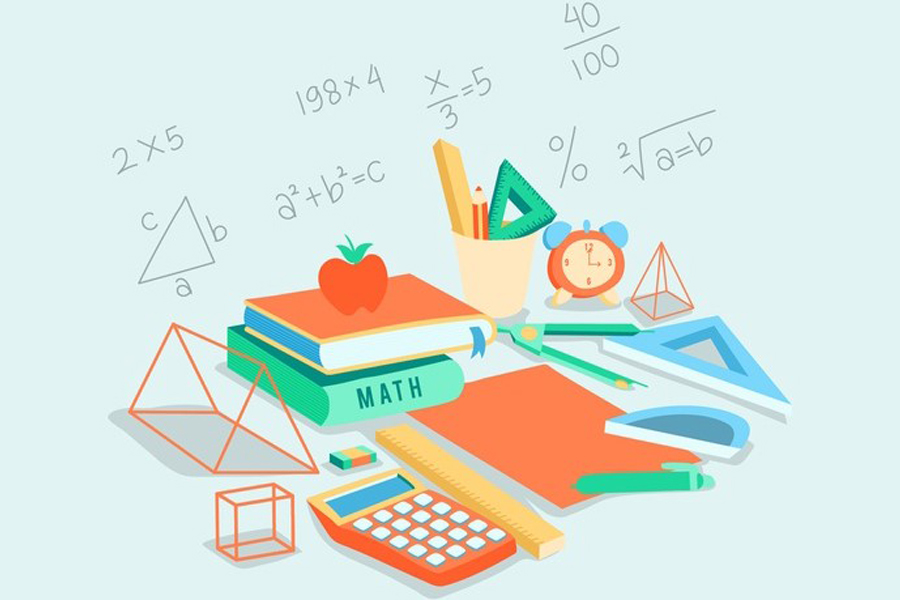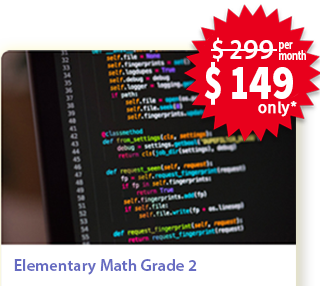Middle School Math Grades 6 - 8[PL][11-13]
Overview
Aligned with the common core curriculum of 6th to 8th grades, these sessions introduce the concepts of ratios & proportions, the number system, expressions & equations, statistics and probability, functions etc. Practicing these topics gives a solid foundation to take on the advanced high school courses like Algebra and Geometry.
Curriculum
- 1 Understand the concept of a ratio
- 2 Understand the concept of a unit rate
- 3 Use ratio and rate reasoning to solve real-world and mathematical problems
- 4 Interpret and compute quotients of fractions
- 5 Write, read, and evaluate expressions in which letters stand for numbers.
- 6 Apply the properties of operations to generate equivalent expressions.
- 7 Greatest Common Factor and Least Common Multiplier
- 8 Positive and Negative numbers
- 9 Understand a rational number as a point on the number line
- 10 Solve real-world and mathematical problems by graphing points in all four quadrants
- 11 Write and evaluate numerical expressions involving whole-number exponents
- 12 Apply the properties of operations to generate equivalent expressions
- 13 Identify when two expressions are equivalent
- 14 Solve one-variable equations and inequalities
- 15 Represent and analyze quantitative relationships between dependent and independent variables
- 16 Find the area of right triangles, other triangles, special quadrilaterals, and polygons
- 17 Find the volume of a right rectangular prism with fractional edge lengths
- 18 Draw polygons in the coordinate plane given coordinates for the vertices
- 19 Three-dimensional figures using nets made up of rectangles and triangles
- 20 Develop understanding of statistical variability
- 21 Summarize and describe distributions
- 22 Compute unit rates associated with ratios of fractions
- 23 Recognize and represent proportional relationships between quantities
- 24 Use proportional relationships to solve multistep ratio and percent problems
- 25 Add and subtract rational numbers, represent addition and subtraction on a horizontal or vertical number line diagram
- 26 Multiply and divide rational numbers
- 27 Solve real-world and mathematical problems involving the four operations with rational numbers
- 28 Use properties of operations to generate equivalent expressions
- 29 Solve multi-step real-life and mathematical problems posed with positive and negative rational numbers
- 30 Use variables to represent quantities in a real-world or mathematical problem
- 31 Solve problems involving scale drawings of geometric figures
- 32 Draw geometric shapes with given conditions
- 33 Describe the two-dimensional figures that result from slicing three-dimensional figures
- 34 Solve real-life and mathematical problems involving angle measure, area, surface area, and volume
- 35 Use random sampling to draw inferences about a population
- 36 Draw informal comparative inferences about two populations
- 37 Investigate chance processes and develop, use, and evaluate probability models
- 38 Irrational numbers
- 39 Convert a decimal expansion which repeats eventually into a rational number
- 40 Use rational approximations of irrational numbers to compare the size of irrational numbers
- 41 Work with radicals and integer exponents
- 42 Understand the connections between proportional relationships, lines, and linear equations
- 43 Analyze and solve linear equations and pairs of simultaneous linear equations
- 44 Define, evaluate, and compare functions
- 45 Use functions to model relationships between quantities
- 46 Verify experimentally the properties of rotations, reflections, and translations
- 47 Understand congruence and similarity
- 48 Describe the effect of dilations, translations, rotations, and reflections
- 49 Use informal arguments to establish facts about the angle sum
- 50 Understand and apply the Pythagorean Theorem
- 51 Solve real-world and mathematical problems involving volume of cylinders, cones, and spheres
- 52 Construct and interpret scatter plots for bivariate measurement data
- 53 2 Using straight lines to model relationships between two quantitative variables
- 54 2 Use the equation of a linear model to solve problems in the context of bivariate measurement data
- 55 2 Construct and interpret a two-way table summarizing data on two categorical variables
Enroll today to book your slot!
*Weekly 2 classes. Only limited seats available, Enroll Today.



